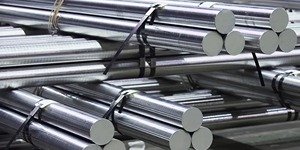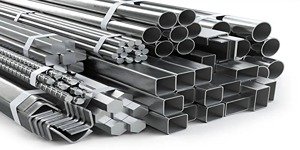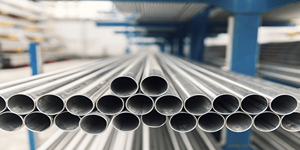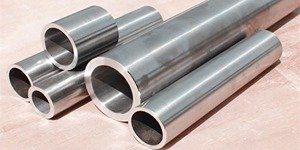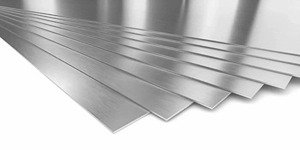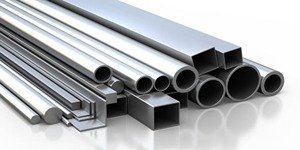-
Call Us On
+91 97695 84950
-
Mail Us @
info@mokshtubes.com
Cladded Plates
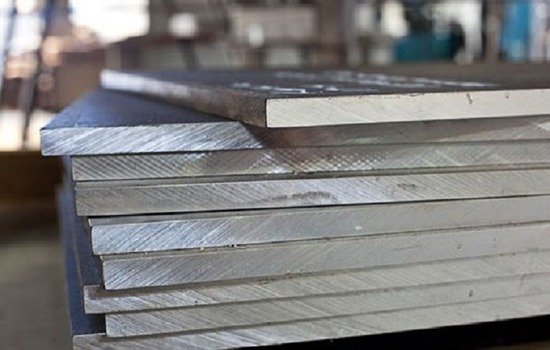
Cladded Plates are advanced composite materials created by bonding two or more different metals to combine their best properties. Typically, a corrosion-resistant alloy (CRA) such as stainless steel, nickel alloy, or titanium is bonded to a structural backing material like carbon steel or low-alloy steel.
This process results in a plate that offers the strength, cost-efficiency, and weldability of the base metal while providing the corrosion resistance, wear resistance, or heat resistance of the cladding layer.
Moksh Tubes & Fittings LLP, we supply high-quality cladded plates manufactured through explosive bonding, roll bonding, or weld overlay techniques. Our products comply with ASTM, ASME, API, and international standards, ensuring long-lasting performance in aggressive environments like oil & gas, petrochemical, marine, and power generation industries.
Specifications
| Category | Details |
|---|---|
| Base Material (Backing Steel) | Carbon Steel (ASTM A516 Gr. 60/70, ASTM A36), Low Alloy Steel |
| Cladding Material | Stainless Steel, Duplex & Super Duplex, Nickel Alloys, Titanium, Copper Alloys |
| Thickness Range | 3 mm to 200 mm (total composite thickness) |
| Cladding Thickness | 1 mm to 25 mm (depending on requirement) |
| Plate Size | Up to 3,000 mm width × 12,000 mm length (custom sizes available) |
| Cladding Methods | Explosive Bonded, Roll Bonded, Weld Overlay |
| Standards | ASTM B898, ASME SA263, SA264, SA265, API clad plate standards |
| Finishes | Mill Finish, Pickled & Passivated, Polished |
Charts
Cladded Plate Weight Chart (kg/m²)
| Total Thickness (mm) | MS + SS Clad | MS + Copper Clad | MS + Brass Clad | SS + Aluminium Clad | SS + Copper Clad |
|---|---|---|---|---|---|
| 4 (3+1) | 31.4 | 32.1 | 31.9 | 29.5 | 32.5 |
| 5 (4+1) | 39.2 | 40.2 | 40.0 | 37.1 | 40.9 |
| 6 (5+1) | 47.1 | 48.4 | 48.2 | 44.8 | 49.4 |
| 8 (6+2) | 62.8 | 64.5 | 64.2 | 59.0 | 65.9 |
| 10 (8+2) | 78.5 | 80.6 | 80.2 | 73.8 | 82.4 |
| 12 (10+2) | 94.2 | 96.7 | 96.3 | 88.6 | 98.9 |
| 16 (12+4) | 125.6 | 129.0 | 128.5 | 118.1 | 132.0 |
| 20 (15+5) | 157.0 | 161.2 | 160.6 | 147.6 | 165.2 |
| 25 (20+5) | 196.3 | 201.5 | 200.9 | 184.5 | 206.7 |
| 30 (25+5) | 235.5 | 241.8 | 241.2 | 221.5 | 248.2 |
| 40 (30+10) | 314.0 | 322.4 | 321.6 | 295.2 | 331.0 |
| 50 (40+10) | 392.5 | 402.9 | 402.0 | 368.9 | 413.7 |
Grades Available
Cladded Plates are available in multiple combinations of base and clad materials, including
| Material | Grades / Clad Options |
|---|---|
| Stainless Steel Clad |
SS 304, 304L, 316, 316L, 321, 347 over carbon steel backing
(Corrosion resistance & chemical processing) |
| Duplex & Super Duplex Clad |
UNS S31803, S32750, S32760 for offshore and harsh environments
(Oil, gas & offshore applications) |
| Nickel Alloy Clad |
Inconel 625, Inconel 825, Hastelloy C22/C276 for chemical plants
(High-temperature & corrosive service) |
| Titanium Clad |
Grades 1, 2, 5 for desalination and aerospace industries
(Aerospace & desalination projects) |
| Copper & Copper-Nickel Clad |
Cu-Ni 70/30, Cu-Ni 90/10 for marine and shipbuilding use
(Marine & shipbuilding applications) |
| Special Alloys |
AL-6XN, Alloy 926, and other high-performance metals for project-specific requirements
(High-performance & custom applications) |
Applications
Cladded Plates are widely used in critical industries where strength, corrosion resistance, and cost efficiency are essential:
Construction & Infrastructure
- Cladded plates for structural support and corrosion resistance
Marine & Shipbuilding
- Cu-Ni, stainless, and duplex clads for seawater & marine environments
Oil, Gas & Petrochemical
- Nickel alloy, stainless, and duplex clads for pressure vessels, pipelines, and separators
Automotive & Aerospace
- Titanium and stainless clads for engine components, aerospace structural parts
Industrial Manufacturing
- Clad plates for heat exchangers, reactors, and machining stock
Decorative & Architectural
- Stainless and brass clads for architectural panels and luxury trims
Power Generation
- Cladded plates for boiler walls, condensers, and flue gas desulfurization systems
Defense & Aerospace
- Specialized clads for military equipment and aerospace structural parts
Uses of Cladded Plates
Cladded Plates are used extensively across multiple industries, including:
Cost-Effective Corrosion Protection
Provides corrosion resistance at a lower cost than solid alloy plates
Extended Service Life
Extends the life of pressure vessels, tanks, and piping systems
Chemical & Marine Safety
Enables safe handling of aggressive chemicals and seawater
Strength with Alloy Protection
Reduces material costs by combining carbon steel strength with alloy protection
Reliable Long-Term Performance
Used in critical safety applications requiring durable, long-term reliability
Advantages of Cladded Plates
Cost-Effective Solution
Alloy layer provides corrosion resistance without full-thickness alloy costs
Enhanced Strength
Structural integrity of carbon steel with surface durability of exotic alloys
Versatility
Available in a wide range of alloy combinations for multiple industries
Customizable
Tailored cladding thickness and plate dimensions
Sustainability
Reduces waste of expensive materials while delivering top-tier performance
Compliance with Global Standards
Manufactured as per ASTM, ASME, and API requirements
Frequently Asked Questions (FAQ) – Cladded Plates
What are cladded plates?
Cladded plates are composite plates made by bonding two or more different metals together. Typically, a corrosion-resistant metal (like stainless steel or nickel alloy) is bonded to a strong carbon steel or alloy steel base to combine strength and corrosion resistance.
Which materials are used for cladded plates?
Base Metals: Carbon steel, alloy steel
Cladding Metals: Stainless steel (304, 316, 316L), Nickel alloys, Titanium, Duplex & Super Duplex, Copper alloys
What are the common bonding methods for cladded plates?
Explosion Welding – high-energy bonding for dissimilar metals
Roll Bonding – mechanical bonding via high pressure
Bimetallic Casting – molten metal bonding
Other specialized welding techniques depending on application
What thickness range is available in cladded plates?
Base Metal: typically 6 mm to 150 mm
Cladding Layer: typically 1 mm to 15 mm
(Custom thicknesses can be provided as per requirement)
What are the common applications of cladded plates?
Chemical processing and storage tanks
Petrochemical and refinery equipment
Heat exchangers and pressure vessels
Marine and offshore structures
Power generation equipment
WHY CHOOSE US?
Contact Us
Looking for Cladded Plates that deliver strength, corrosion resistance, and cost-efficiency?
Contact Moksh Tubes & Fittings LLP

